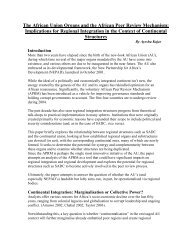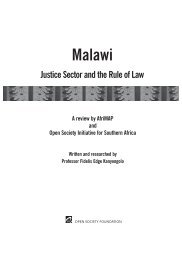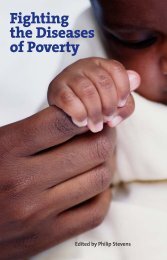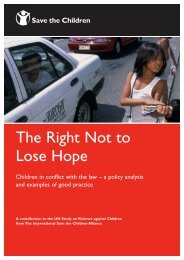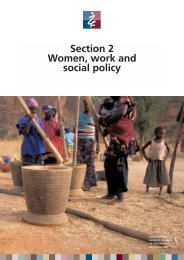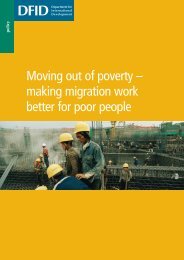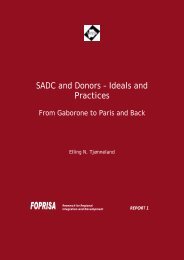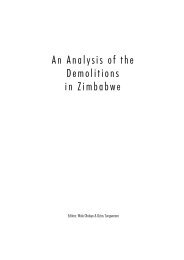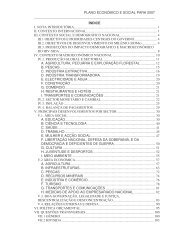Report of the National Conference: Women's Property Rights ... - FAO
Report of the National Conference: Women's Property Rights ... - FAO
Report of the National Conference: Women's Property Rights ... - FAO
You also want an ePaper? Increase the reach of your titles
YUMPU automatically turns print PDFs into web optimized ePapers that Google loves.
• Herbal gardens e.g. Moringa, African potato. Export <strong>of</strong> herbal teas by ZWOT inZimbabwe• Bee pollen: export <strong>of</strong> honey• Revolving funds known by various terms in <strong>the</strong> region• Craft work: knitting by GROOTS Kenya, pottery in Choma Zambia. Badges,Christmas cards by ZWOT and ZPCDA.• Mo<strong>the</strong>r centres for child day care• Ntengwe projects – wills and inheritance with media and drama.How can <strong>the</strong>se be improved or scaled up?• Improving marketing skills• Community contributions• Lobbying for funding• Strong women’s movement and civil society e.g. in Uganda• Extend memory book project• Sharing <strong>of</strong> experiences through exchange visits• Practical support for those testifying- need for accountability.• Feedback required by communities• Need to target affected vulnerable families ra<strong>the</strong>r than just HIV infected• Need to form an alliance for AfricansRecommendations• Memory Book – capacity for disclosure, will writing etc• Funding options – revolving fund• MIPA- Meaningful Involvement <strong>of</strong> People living with HIV and AIDS• Inclusion <strong>of</strong> disability• Experiences and exchange visits• Emergency/crisis support• Researchers’ accountability –practical assistance to people that testify• Zambia to be part <strong>of</strong> an alliance to push livelihoods agenda.Working Group Three: Advocacy and sensitization programmes, media and o<strong>the</strong>rinnovative methodsGuiding questionsWhat are <strong>the</strong> key issues and messages?Who needs to be targeted?How?Target Groups1. Policy makers: law makers, political leaders, traditional leaders, line ministries2. Beneficiaries: victims/ <strong>the</strong> vulnerable, community3. Potential partners: community leaders, traditional leaders, political leaders, lawenforcement (police), care givers, religious leaders, media/press, NGOs.4. Adversaries/Abusers/opponents: abusers, potential abusers.31




